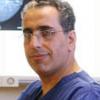The good news is that some of the risk factors can be modified in order reduce the risk of breast cancer.
General Lifestyle
• Avoid becoming overweight after the menopause.
• Undertake regular exercise and increase physical activity (a minimum of 1 hour per week).
• Avoid excessive alcohol intake – try not to drink more than 6 units of alcohol per week (equivalent to one glass of wine per day).
• Reduce the intake of animal fat and red meat (especially overcooked red meat)
• Eat more fish (excluding farmed salmon)
• Replace full-fat dairy products with low-fat dairy products
• Increase the intake of fresh fruits and vegetables especially: cranberries, blueberries, watercress, broccoli, raspberries, cherries, red grapes, and pomegranates. These fruits can be also taken as fresh juice drinks with no added artificial ingredients (e.g. fresh smoothies ).
• Increase the intake of green tea.
• Increase the intake of olive oil.
Comment: There is no credible scientific evidence that underarm cosmetics and low-fat dairy products increase the risk of developing breast cancer. Soya products seem to be neutral i.e. they cause neither harm nor benefit regarding breast cancer.
Hormonal
• Avoid taking HRT after the menopause and try to use alternatives to HRT.
• Try to have your first child before the age of 30 years and avoid pregnancy after the age of 40 years.
Other Ways (for Women at High Risk)
• Anti-oestrogen drugs, such as tamoxifen (a breast cancer drug) and raloxifene (used to protect post-menopausal women from developing osteoporosis), have been shown to reduce the risk of breast cancer by 50–75%. However, further research is needed before these drugs can be recommended for breast cancer prevention.
• Preventative mastectomy (removal of the whole breast) seems to reduce the risk of breast cancer by 90% in high-risk women, such as those who carry breast cancer genes.
• Preventive oophorectomy (removal of the ovaries) also decreases the risk of developing breast cancer in BRCA-1 and BRCA-2 gene carriers.
• Recent research suggests that aspirin-like drugs, such as Neurofen, may reduce the risk of developing breast cancer. Further research is needed before these drugs can be recommended for breast cancer prevention.
• A new breast cancer drug called Arimidex has been found to be better than tamoxifen in preventing breast cancer in the opposite breast among postmenopausal women with breast cancer, but further research is needed.
Breast Screening
What is the Purpose of Breast Screening?
The aim of breast screening is to detect breast cancer at an early stage in women who appear well and do not have any symptoms of the disease. The earlier breast cancer is detected, the more likely it is to be treatable.
The screening methods currently used include:
• Breast examination by a doctor.
• Digital Mammography (breast X-ray). This remains the gold standard
• Magnetic resonance imaging (MRI)
Annual digital mammography is recommended for women aged 40-50 years, thereafter screening mammography can be carried out every 18 months. Ultrasound examination may be added to mammography in women with dense breasts. MRI is recommended in young women (30 -50 years of age) who are at a high risk because of family history.
The time of a woman’s life when her ovaries stop releasing an egg (ovum) on a monthly cycle, and her periods cease
Full medical glossary







